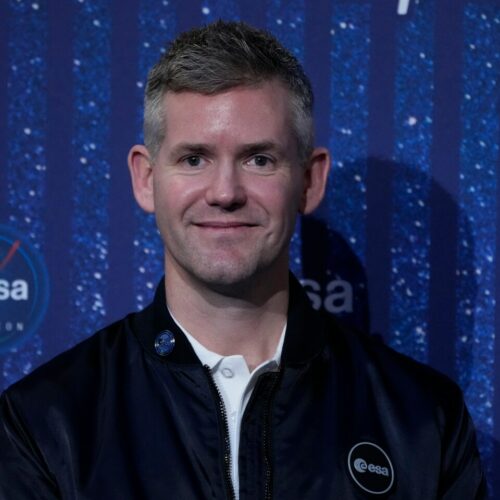The European Space Agency (ESA) has selected a person with a physical disability to be included in its next generation of astronauts for the first time, in what it hopes is the initial step toward sending a “parastronaut” to space.
McFall will take part in the ESA’s “Parastronaut Feasibility Project,” which the agency said in a statement was intended to “develop options for the inclusion of astronauts with physical disabilities in human spaceflight and possible future missions.” While it can’t at this stage guarantee that McFall will be sent into space, the agency has said it will “commit to trying as hard and seriously as we can” to make it happen.
In addition to his medical training, McFall, who lost his right leg in a motorcycle accident at 19, is a former sprinter who represented the U.K. in the 2008 Beijing Paralympic Games — where he won bronze.
European space officials have been using the term “parastronauts” to refer to people who are “psychologically, cognitively, technically and professionally qualified to be an astronaut, but have a physical disability that would normally prevent them from being selected due to the requirements imposed by the use of current space hardware.”
Through technical studies, space simulations, analogue missions and conversations with the agency’s international space partners, the ESA hopes McFall’s participation in the program will allow the agency to determine what is required to send a person with a physical disability into space.
“As an amputee, I never thought that being an astronaut was a possibility,” McFall said in an interview posted to the ESA’s website.
“I’m extremely excited about using the skills that I have for problem solving, identifying issues and overcoming obstacles that allow people with a physical disability to perform the job equally to their able-bodied counterparts,” he said.
McFall also said he wanted to find the answers to the practical questions posed by sending a person with a physical disability into space: “What actually happens to someone with a lower limb amputation in micro gravity? What happens to their residual limb?”
McFall will join five career astronauts and 11 reserve astronauts. It’s the first time the ESA has recruited a new class of space explorers to join its ranks since 2009.
In an earlier statement encouraging candidates with disabilities to apply for the program, the ESA said “the expectations of society towards diversity and inclusivity have changed,” and that “including people with special needs also means benefiting from their extraordinary experience, ability to adapt to difficult environments, and point of view.”
“Science is for everyone, and space travel, hopefully, can be for everyone,” McFall said.
In an interview with the Associated Press, NASA spokesperson Dan Huot said the U.S. spaceflight agency was following the selection process taking place across the Atlantic with “great interest,” but he noted that “NASA’s selection criteria currently remains the same.”
“For maximum crew safety, NASA’s current requirements call for each crew member to be free of medical conditions that could either impair the person’s ability to participate in, or be aggravated by, spaceflight, as determined by NASA physicians,” Huot told AP.
The list of 17 candidates selected by the ESA this year also includes two women, Sophie Adenot from France and the U.K.’s Rosemary Coogan — who will be bolstering another underrepresented group in space. Earlier this year, the agency announced Italian astronaut Samantha Cristoforetti would become the first European female astronaut to serve as the commander of the International Space Station, 15 years after NASA astronaut Peggy Whitson became the station’s first female commander in its history.
At their two-day council, the ESA also announced its 22-members had committed to increasing the agency’s budget by 17 percent, which its director general tweeted was equivalent to 16.9 billion euros ($17.6 billion) over the next three years. The agency said it plans to focus the next stage of its space exploration on low Earth orbit, the moon and Mars.





